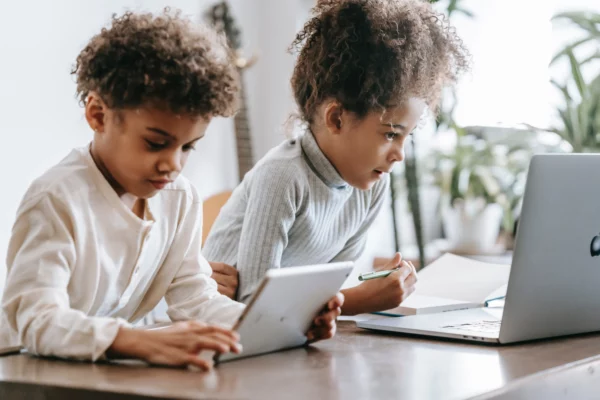
Table of Contents
This is the story of a friend who teaches first grade and wishes to remain anonymous.
Teaching kids to code has become a very important part of elementary school, where young minds are like sponges ready to soak up new information. In a 1st grade classroom close to the busy learning halls, an experienced teacher started a coding journey that would change her students’ academic and personal lives for good.
Light The Fire
As she looked at her first-grade students, she saw that each of them had unrealized potential. She thought that teaching them to code could be the key to unlocking their creativity, critical thinking, and teamwork skills. She taught her students about coding with a strong will and a little bit of curiosity, which lit a fire in their young minds that would keep going for years.
A Teacher’s Will is More Important than Skill at First
Even though this dedicated teacher wasn’t a computer whiz with years of experience coding, she saw a chance to engage her students in a different way. She went into uncharted waters with the help of read-aloud books that brought coding ideas to life. She started small by giving them tactile coding activities that didn’t involve screens. This helped her lay the groundwork. As her students did well with these early challenges, she gradually raised the stakes by adding coding devices that required more complex planning and sequencing. The journey reached its peak when block coding was introduced. This was a new digital frontier where the adventure only got bigger.
Confidence Building
She had no idea that her students would soak up coding like sponges and be hungry for new challenges all the time. No matter how they learned, whether they were slow learners, English Language Learners, students who were struggling with their emotional well-being, or advanced learners, every child found a place for themselves in the world of coding. The differences between them became less important against the background of code. As they learned to code, something unexpected happened: their confidence went through the roof.
Growing Coders
Coding wasn’t just about algorithms and syntax anymore; it became a way to improve and grow as a person. As their self-esteem grew, they became more willing to try new things and lost their fears along the way. Once shy and quiet, these students became leaders, and their voices carried with a new sense of conviction.
Coding started a revolution inside of this teacher’s classroom. It made a place where everyone could learn and feel like they were valued and capable. The lessons went beyond what was on the screen and gave them skills that were more than just lines of code. Collaboration grew, persistence took root, problem-solving became second nature, and resilience became their silent armor against challenges.
Besides syntax and logic, coding taught these young people important skills for life. The teacher’s leap of faith made her classroom a place where students were engaged and helped them grow in all areas. The students may not know it, but they have started an educational trip to scratch the surface of understanding technology that will greatly impact their futures.
Conclusion
So, as the world of education changes and opens up to new ideas, this first-grade teacher’s story shows how powerful coding can be in elementary schools. Through the seemingly complicated world of ones and zeroes, young learners find a tapestry of skills that will help them not only in school but also in the complicated paths of life.

